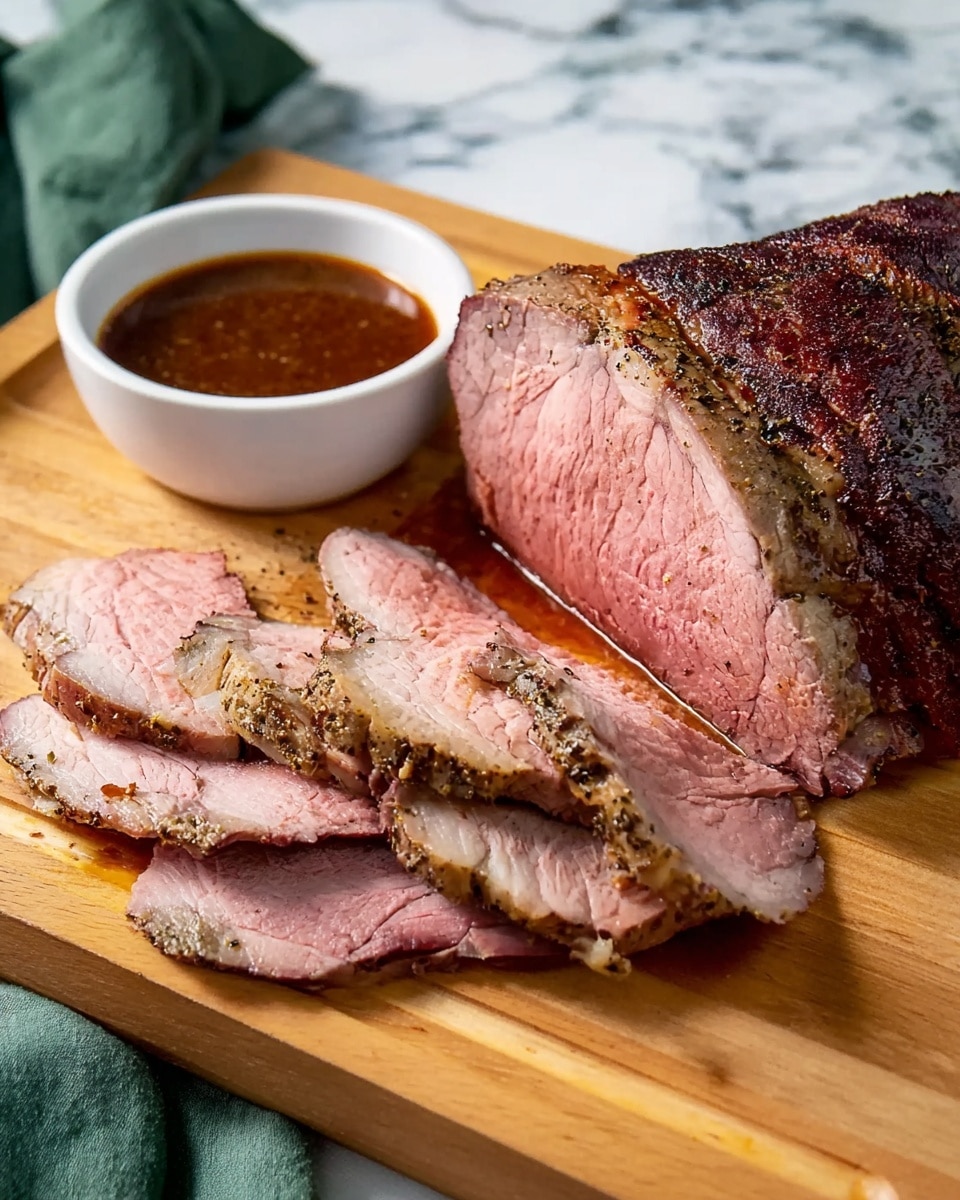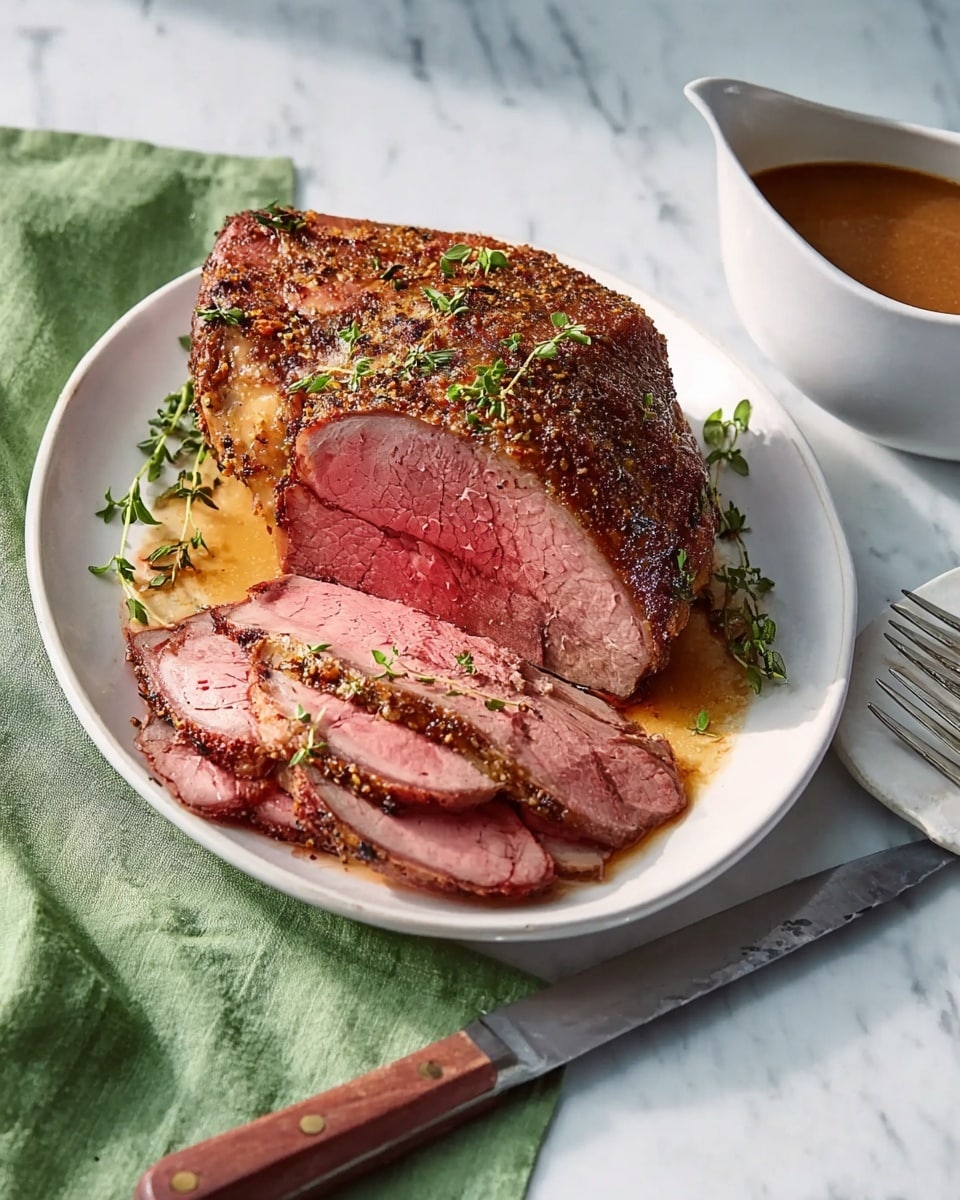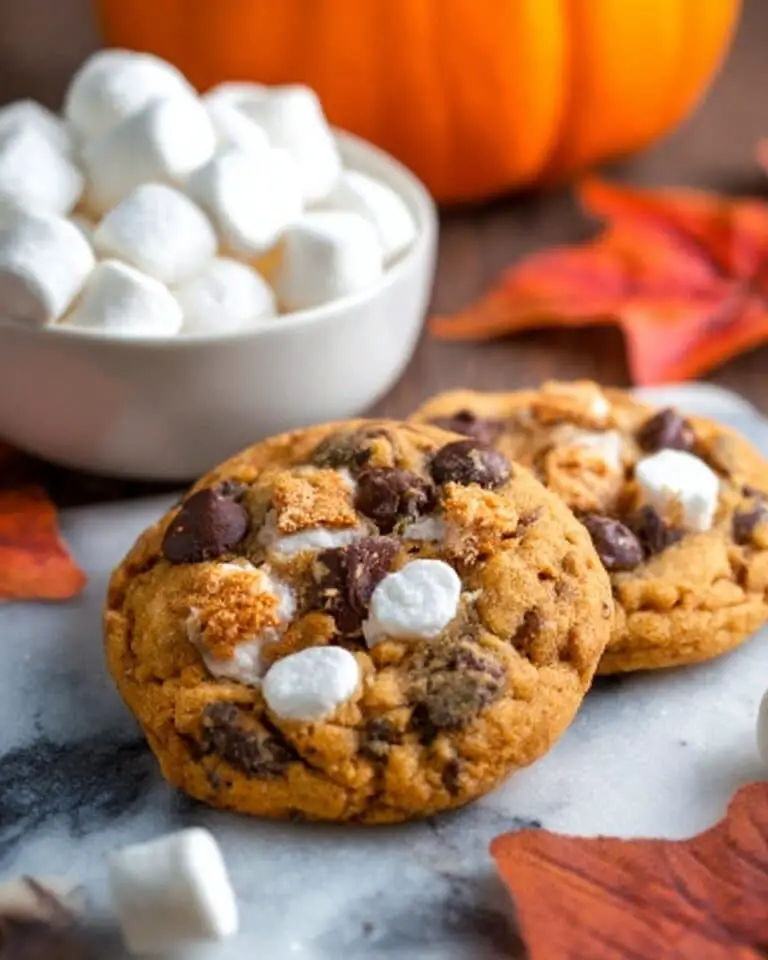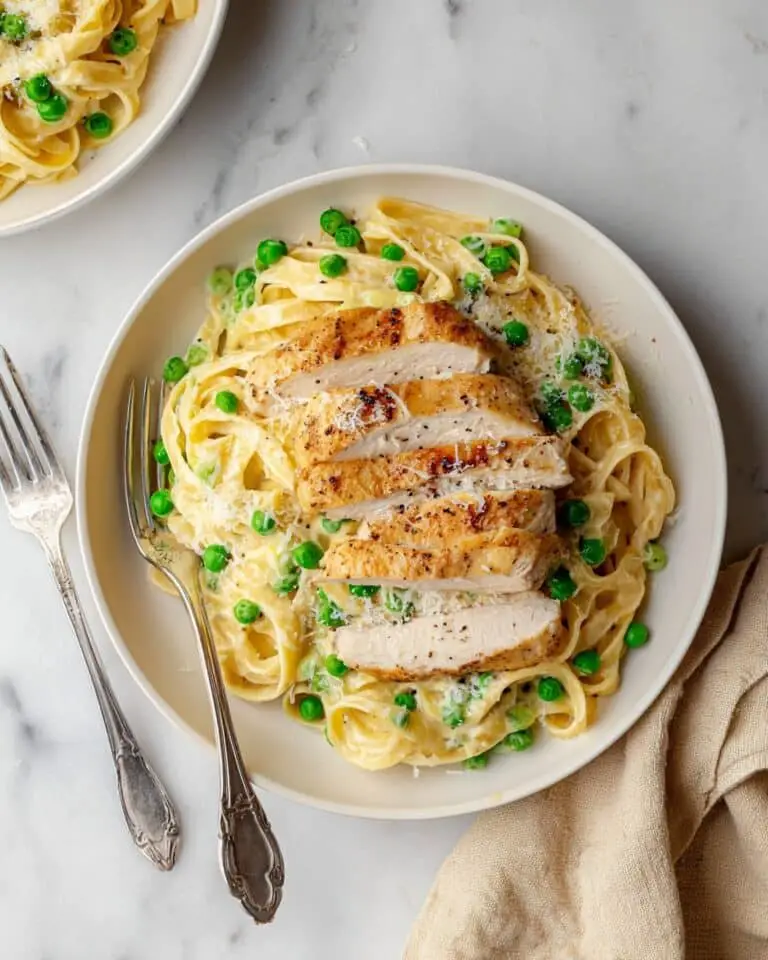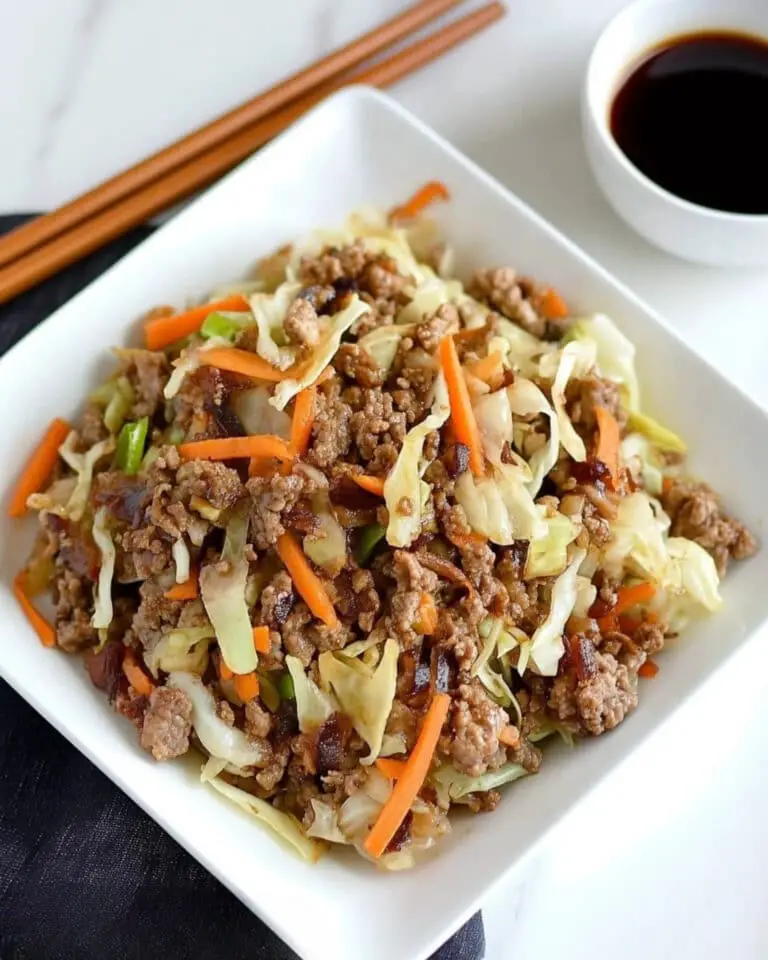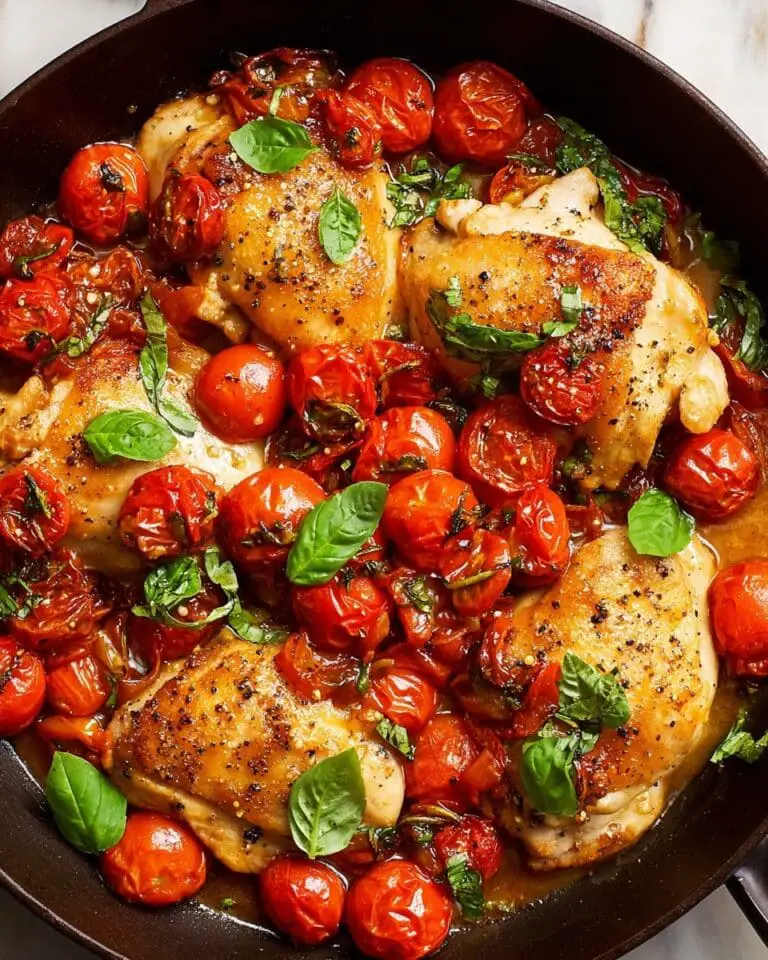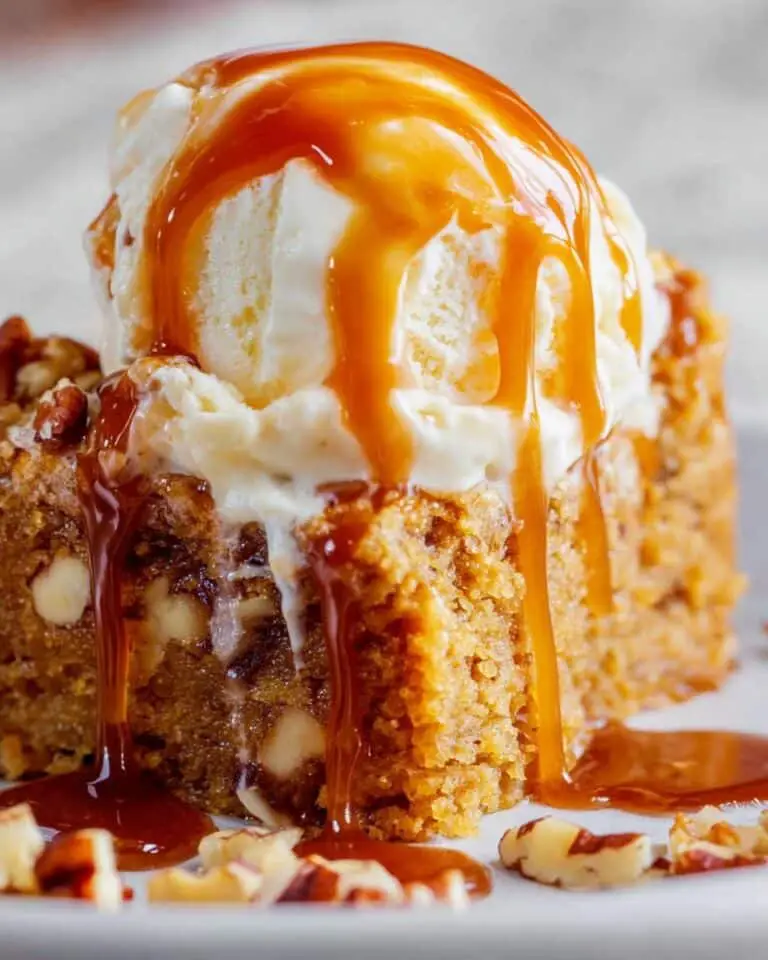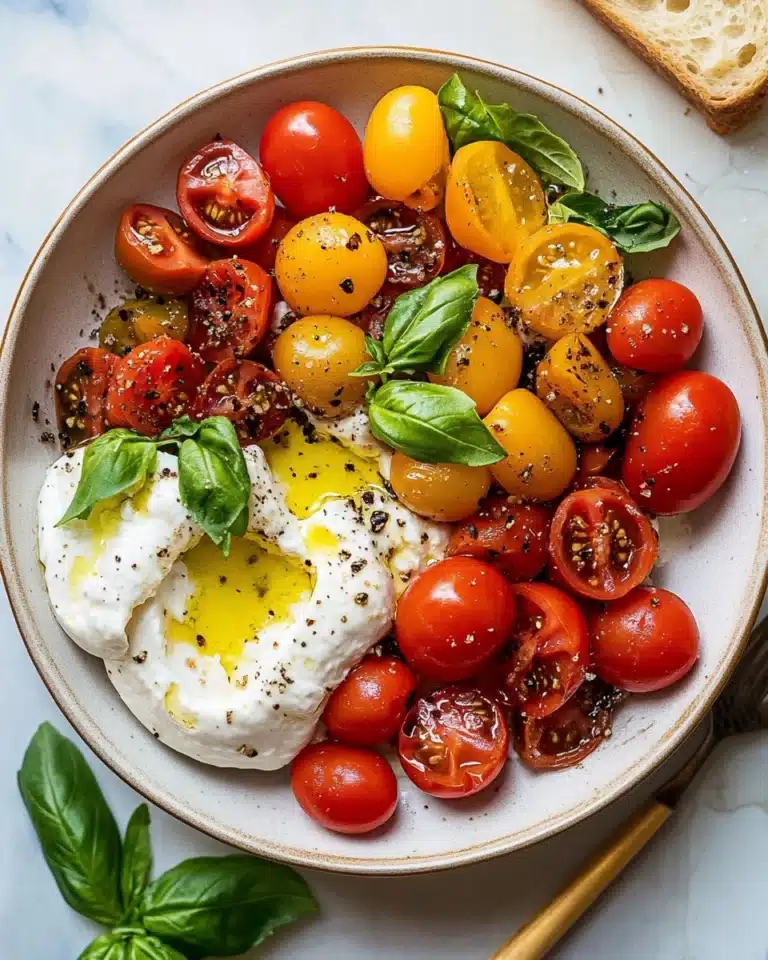If you’re craving a hearty, comforting meal that’s sure to impress everyone around your dinner table, then you absolutely have to try this Classic Roast Beef with Red Wine Gravy Recipe. I’m telling you, it’s one of those timeless dishes that brings people together—and once you nail this recipe, you’ll wonder why you ever settled for anything less. Juicy, tender roast beef paired with a rich, silky red wine gravy? Yes please! Stick around because I’m going to walk you through every step, share some of my kitchen secrets, and help you get it just right every time.
Why You’ll Love This Recipe
- Incredibly juicy roast: Slow-roasting at low heat keeps the beef tender and bursting with flavor.
- Simple ingredients: You don’t need anything fancy—just good beef, garlic, and a splash of red wine for magic.
- Impressively versatile: Perfect for family dinners, special occasions, or even meal prepping for the week.
- Fail-proof method: I’ve tested this recipe so many times, and each roast comes out just right—medium rare and juicy every time.
Ingredients You’ll Need
Choosing the right cut of beef and a handful of fresh, quality ingredients really sets this roast apart. I always look for rump roast with a nice layer of fat—it helps keep everything juicy and adds amazing flavor as it melts during roasting.
- Boneless Rump Roast: Look for an end cut with a good fat cap; it keeps the meat moist and flavorful.
- Extra virgin olive oil: Use this to rub the roast so garlic and seasoning stick nicely and the crust gets beautifully browned.
- Garlic slivers: Fresh garlic punched into little incisions gives the roast a subtle, aromatic kick.
- Salt and pepper: Simple but essential—to enhance the natural meaty flavors.
- Red wine, water, or beef stock: This will be the base for your luscious gravy—choose a good quality red wine for depth.
- Cornstarch: To thicken the gravy perfectly without lumps.
Variations
I love how flexible this Classic Roast Beef with Red Wine Gravy Recipe is, so I encourage you to make it your own. Whether it’s adjusting seasonings, playing with sides, or swapping cuts of beef, there’s room to experiment and still get delicious results.
- Different beef cuts: Try sirloin or round roast if rump isn’t available; just keep an eye on cooking time.
- Herb infusion: Adding fresh thyme or rosemary to the garlic slivers or gravy amps up the aroma and makes it more rustic.
- Make it dairy-free: Skip the butter in the gravy and use a bit of extra olive oil if needed.
- Wine-free gravy: Substitute red wine with beef stock and a dash of balsamic vinegar for tang.
How to Make Classic Roast Beef with Red Wine Gravy Recipe
Step 1: Bring Your Roast to Room Temperature & Prepare
Starting off, take your beef out of the fridge at least an hour, or better yet two—this lets it reach room temperature and cook more evenly. I learned this trick early on, and it really makes a difference in tenderness. Sprinkle salt on all sides, then wrap it back up and let it sit until you’re ready. This does a little pre-seasoning and helps the meat absorb the salt better.
Step 2: Prep the Roast with Garlic and Seasoning
Pat the roast dry with paper towels—that helps with browning. Use a sharp knife to make about 8 to 10 small slits around the beef. Pop a garlic sliver into each incision for that subtle, fragrant garlic infusion. Then rub the whole roast with olive oil and sprinkle generously with salt and pepper. This sets the foundation for that gorgeous crust we all crave.
Step 3: Roast With Perfect Temperature Control
Place your oven rack in the middle and another rack just below it to hold a pan for drippings. Put the roast directly on the middle rack, fat side up—this way, the fat slowly melts over the beef, basting and flavoring it as it roasts. Cook first at 375°F (190°C) for 30 minutes to brown the outside nicely. Then lower your oven temp to 225°F (about 107°C) and continue roasting for another 1.5 to 2.5 hours depending on the shape and size. Use a meat thermometer—when it hits 135-140°F, it’s perfect medium rare.
Step 4: Rest Your Roast and Make the Gravy
Once out of the oven, tent the roast loosely with foil and let it rest for 20-30 minutes. Trust me, resting is crucial—it allows the juices to redistribute for a moist, tender cut instead of drying out on your plate. Meanwhile, grab the pan with the drippings and place it on your stovetop over medium heat. Add red wine, water, or beef stock to deglaze and scrape up all those flavorful bits. Whisk in a cornstarch slurry (cornstarch mixed with a little water) to thicken the gravy, stirring quickly to keep it smooth. If the drippings are low on fat, a little butter adds richness—you could even throw in some fresh thyme if you have it on hand.
Step 5: Slice and Serve
After resting, thinly slice your roast beef—use a long, sharp bread knife if you have one; it really helps with clean, even cuts. Serve it with generous spoonfuls of that luxurious red wine gravy either poured over or on the side. When I first tried this recipe, my family went crazy over the combination—it’s such a classic for a reason!
Pro Tips for Making Classic Roast Beef with Red Wine Gravy Recipe
- Bring to room temperature: This step ensures the roast cooks evenly and stays juicy—skip it and you risk uneven cooking.
- Use a meat thermometer: Don’t rely on time alone; checking the internal temp guarantees you hit that perfect medium rare every time.
- Roast fat-side up: Let the fat baste the beef naturally while cooking, which adds great flavor and moisture.
- Rest before slicing: Cutting too soon causes juices to run out—resting locks those flavors in for juicy meat.
How to Serve Classic Roast Beef with Red Wine Gravy Recipe
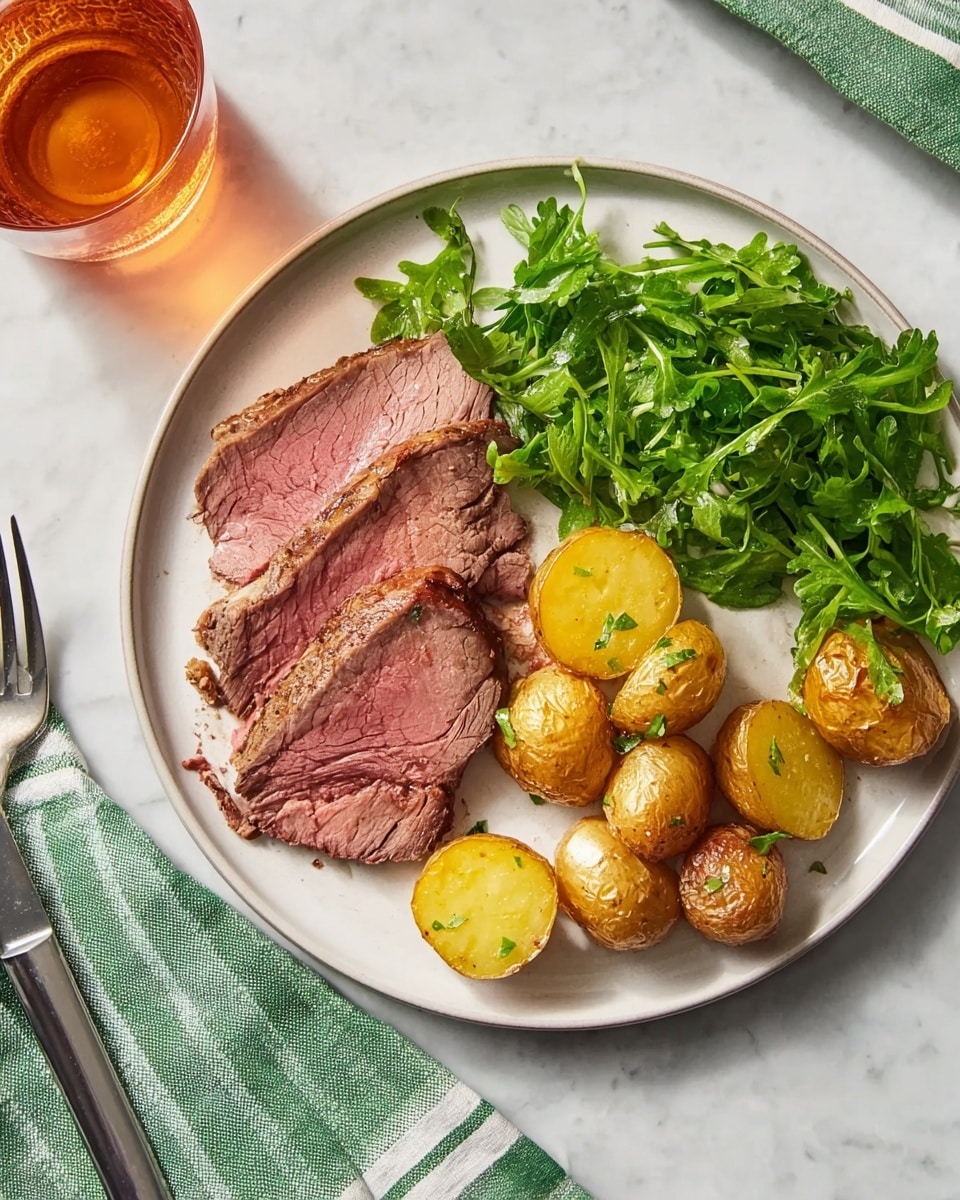
Garnishes
I like to keep garnishes simple—a sprinkle of fresh thyme or chopped parsley not only adds a pop of color but complements the savory, earthy flavors of the gravy beautifully. Sometimes lemon zest on the side brightens the plate too if you want a subtle zing.
Side Dishes
This roast pairs beautifully with creamy mashed potatoes or buttery roasted root vegetables. My family loves a side of green beans almondine or steamed broccoli to add some color and crunch. Yorkshire pudding also makes a classic accompaniment if you want to get a bit fancy.
Creative Ways to Present
For special occasions, I like to serve the roast whole on a wooden carving board surrounded by roasted herbs and seasonal veggies—it’s such a warm, inviting presentation. Or slice it in the kitchen and plate portions with gravy drizzled artistically and a sprig of fresh thyme on top. It makes guests feel like they’re dining out but with all the cozy home-cooked love.
Make Ahead and Storage
Storing Leftovers
Leftover roast beef keeps really well in an airtight container in the fridge for up to 3 days. I slice it before storing—it makes reheating and serving way easier. Plus, the meat retains its tenderness if you don’t overheat it.
Freezing
I’ve frozen sliced roast beef wrapped tightly in foil and sealed inside freezer bags with great results. It stays tasty for around 2 months. When you’re ready to eat, thaw overnight in the fridge for best texture.
Reheating
To keep leftover roast beef tender, I reheat it gently in a low oven (around 275°F), loosely covered with foil to lock in moisture. Alternatively, a quick warm-up in a pan with a splash of beef stock and some gravy works wonders. Avoid the microwave if you want to preserve texture.
FAQs
-
Can I use a different cut of beef for this Classic Roast Beef with Red Wine Gravy Recipe?
Absolutely! While rump roast is my go-to for tenderness and flavor, you can use sirloin or round roast if that’s what you have. Just keep an eye on the cooking time since different cuts may cook faster or slower depending on their thickness and fat content.
-
How do I know when the roast is perfectly cooked?
The best way is to use a meat thermometer. For medium rare, remove the roast when the internal temperature reaches 135°F to 140°F. Remember it will continue to cook slightly while resting. Relying on time alone can be tricky, as shape and oven temperature variability affect cooking.
-
What’s the secret to making the red wine gravy smooth and lump-free?
Mix the cornstarch with some cold water to create a slurry before adding it to the hot drippings. Stir the gravy constantly while adding the slurry and as it thickens to keep it silky smooth. Adding butter helps too if the drippings are thin or low in fat.
-
Can I prepare this recipe ahead of time?
You sure can! You can season and prepare the roast up to a day before roasting, letting it rest wrapped in the fridge. Also, the gravy can be made ahead and gently reheated. Just make sure to bring the roast to room temp before cooking.
Final Thoughts
This Classic Roast Beef with Red Wine Gravy Recipe holds a special spot in my heart because it’s like a hug on a plate—comforting, flavorful, and reliably delicious. I’ve shared this at family dinners, holiday feasts, and casual Sunday meals, and every time it brings such warmth and smiles around the table. I truly hope you’ll give it a go and discover your new favorite roast recipe, just like I have. Happy cooking, friend!
Print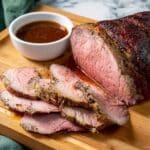
Classic Roast Beef with Red Wine Gravy Recipe
- Prep Time: 1 hour 8 minutes
- Cook Time: 3 hours
- Total Time: 4 hours 8 minutes
- Yield: 6 servings
- Category: Main Course
- Method: Roasting
- Cuisine: American
Description
This classic roast beef recipe features a tender, flavorful rump roast cooked slowly at low temperatures for perfect medium rare results. Infused with garlic and finished with a rich homemade gravy, it’s an ideal centerpiece for a hearty meal that’s sure to impress family and guests.
Ingredients
Beef and Seasoning
- 3 to 3 1/2 pounds (1.3 to 1.6 kg) Boneless Rump Roast (preferably an end cut with a layer of fat)
- 1 tablespoon extra virgin olive oil
- 8-10 slivers of garlic (3 to 4 cloves, sliced in half or into thirds)
- Salt and pepper to taste
Gravy
- Red wine, water, and/or beef stock (for deglazing)
- 1 tablespoon cornstarch
- Optional: butter and fresh thyme for flavoring
Instructions
- Bring beef to room temperature: Remove the roast from the refrigerator at least 1 to 2 hours before cooking to ensure more even cooking. Unwrap, sprinkle all sides generously with salt, then rewrap.
- Preheat the oven: Set the oven to 375°F (190°C). Position one oven rack in the center and another beneath it to catch drippings.
- Prepare the roast: Pat the roast dry with paper towels. Using a sharp knife, make 8 to 10 small incisions around the roast. Insert a garlic sliver into each incision. Rub the entire roast with olive oil, then season all over with salt and freshly ground black pepper.
- Arrange for roasting: Place the roast directly on the middle oven rack, fat side up. Put a roasting pan on the rack below to catch drippings. This setup promotes air circulation and even cooking without needing to turn the roast.
- Initial high-temperature roasting: Cook the roast at 375°F (190°C) for 30 minutes to brown the exterior and lock in flavors.
- Slow roast at low temperature: Reduce oven temperature to 225°F (107°C) and continue roasting for 1 1/2 to 2 1/2 hours, depending on the roast’s shape and size. Keep an eye on it as thinner, longer roasts may cook faster.
- Check for doneness: When juices begin to drip and the exterior is browned, use a meat thermometer to check internal temperature. Remove the roast when it reaches 135°F to 140°F for medium rare.
- Rest the roast: Transfer the roast to a cutting board and tent loosely with aluminum foil. Let rest for 20 to 30 minutes to redistribute juices and ensure tenderness.
- Make the gravy: Place the dripping pan on the stovetop over medium heat. Deglaze with red wine, water, or beef stock, scraping up browned bits. Stir in a cornstarch slurry (1 tbsp cornstarch dissolved in water) and cook until thickened, stirring constantly to avoid lumps. Optionally add butter and fresh thyme for richer flavor. Season with salt and pepper to taste.
- Slice and serve: Using a long, sturdy bread knife, thinly slice the roast against the grain. Serve with the homemade gravy poured over or on the side.
Notes
- This recipe works well with rump roast, round roast, or sirloin roast.
- Slow roasting at low heat breaks down tough fibers in the meat for a tender, juicy roast.
- Resting the roast is essential to retain juices and maximize flavor.
- If you prefer rarer meat, consider letting the roast stay longer at very low heat (around 175°F) to extract more drippings for the gravy.
- Use a meat thermometer to ensure precise doneness and avoid overcooking.
Nutrition
- Serving Size: 1/6 of recipe
- Calories: 527
- Sugar: 0 g
- Sodium: 128 mg
- Fat: 28 g
- Saturated Fat: 10 g
- Unsaturated Fat: 18 g
- Trans Fat: 0 g
- Carbohydrates: 2 g
- Fiber: 0 g
- Protein: 59 g
- Cholesterol: 188 mg

